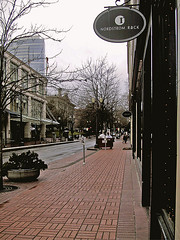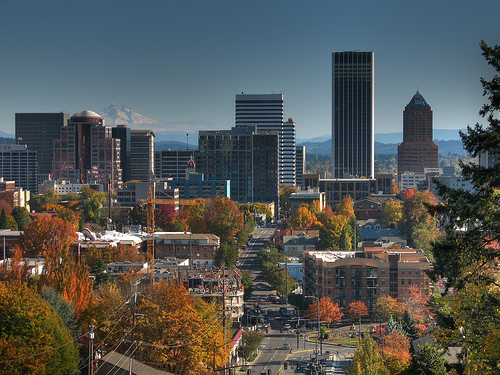What other cities can learn from Portland (and it’s not just what you think)

Posted September 30, 2009 at 1:39PM
People concerned with smart, sustainable development invariably end up talking about Portland (Oregon) or examples therein. This is because it has probably done more to apply the principles that we care about than any other region in the country. The city has done an amazing job of accommodating growth without consuming more land, generating more traffic or emitting more pollution, while remaining economically strong and immensely livable.
As a result, we talk about Portland so much that one of the first reactions you usually get from others in the field is a roll of the eyes and "we can't talk about Portland again," thinking that it's such old news that people are tired of hearing about it.  What they forget, of course, is that it's old news mostly to us, because we talk about Portland all the time to each other. It's not old news at all to most people elsewhere, especially the general public.
What they forget, of course, is that it's old news mostly to us, because we talk about Portland all the time to each other. It's not old news at all to most people elsewhere, especially the general public.
So my position is that we should keep talking about it, and that seems to be Bill Fulton's position, too. Bill is a land use sage in California very much on the side of smart, sustainable land development, but just contrarian enough to go against the grain once in a while. Among the various professional "hats" that he wears, Bill publishes the trade publication California Planning & Development Report. He's also a good guy.
Bill has posted on his blog his summary of "six important lessons to learn from Portland," cautioning that "the important thing is to apply the lessons to your own town, and not try to recreate Portland." Interestingly, Portland's famous urban growth boundary is not on his list; nor is transit-oriented development per se, though it is captured indirectly through one of his points. His lessons are actually a bit more big-picture and holistic, and I like them. Paraphrasing slightly, here they are:
1. Understand what your community's best raw material is and use it to your best advantage.
2. Don't be afraid to just build stuff. Bill cites the aerial tramway that connects the new mega-redeveloping South Waterfront to the Oregon Health Sciences University campus. "No other city in the United States except New York has ever even tried to build such a tram, and the Portland project was plagued by secretiveness, political controversy, 1,000% cost overruns, and neighborhood opposition. In the end, they built it anyway . . .Sometimes you just have to build stuff and see what happens."
3. Never
stop thinking about the actual walking experience. Here he cites the celebrated Pearl District revitalization, and the fact that in some ways it's a bit messy and certainly has a mixture of densities, "a one-story electrical company adjacent to a three-story converted warehouse adjacent to a 15-story condo tower - yet all have a great feel at the street level. Even if you have longer blocks in your town, you have to think about how to break them up - and never, ever overlook what it's like simply to walk down the street." (How I wish that's what we had in the DC area in Friendship Heights or Ballston.)
4. Keep reinforcing the connection between development and transportation. Citing the light rail line and the slow but highly successful streetcar, Bill says, "Other cities don't have to build a streetcar - but they do have to find ways to use small buses or other transit vehicles to link together major employment centers, and do it in a distinctive way that brands the collector experience as unique, fun, and just a part of the experience of being in the town." Amen.
5.
Keep strengthening the informal aspects of city life. "Here's just one example: You have never seen anything like Portland's food carts. They line up by the dozen in parking lots, facing the sidewalk, creating an instant streetside food court of amazing and inexpensive culinary choices . . . Again, it's not necessarily a matter of putting food carts in your downtown parking lots, but finding something small and quirky and fun that's distinct to your town and making it work."
6. Don't hold out for perfection. "Most of the Portland metro area is just like anywhere else. There are freeways and subdivisions and confusing arterials and big malls and stupid little strip centers. But part of the message is that you don't have to transform your whole city - only those parts of your city that are ripe for the transforming. There is no better advertisement for creating more walkable cities than ... well, than creating just one walkable neighborhood in your town."
That's just great stuff. Bill elaborates on these ideas here.
